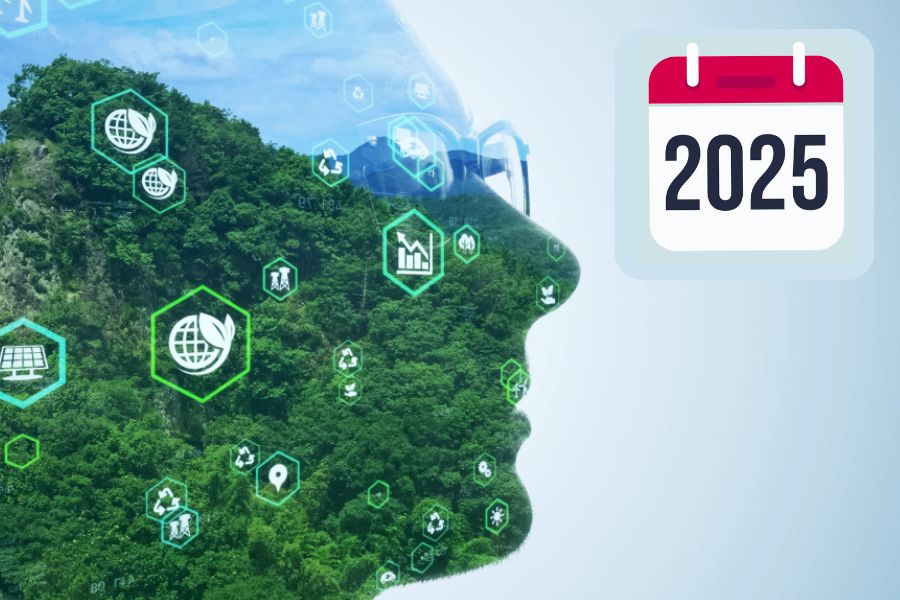Unlocking ESG-Driven Innovation: A New Approach
In a world where $520 billion was allocated to corporate R&D in 2020, envision what could transpire if a significant portion of those resources were directed towards advancing Environmental, Social, and Governance (ESG) efforts. What impedes companies from transitioning ESG from a mere reporting activity to a robust platform that fuels future innovation and research and development (R&D) endeavours? There exists a belief that organizations can embark on a transformative journey by following these crucial steps to unlock this substantial and imperative opportunity:
1. Revamp the Corporate Purpose
Refocusing the company’s purpose to encompass ESG objectives can set the stage for employee-driven innovation and enhanced engagement. Notable examples include Microsoft’s commitment to “empower every person and every organization on the planet to achieve more” and Best Buy’s dedication to “enrich lives through technology.” These purposes have not only inspired significant innovations but have also left a lasting impact on the communities they serve.
2. Collaborate for ESG Innovations
Collaborative innovation with leading customers and ecosystem partners while measuring the impact of ESG innovations is paramount. Walmart’s sustainable supply chains with partners and customers, Merck’s partnership with Zipline for drone delivery of critical medications in remote areas, and Palantir’s data science and AI capabilities in association with the Polaris Project to combat human trafficking serve as noteworthy examples.
3. Harness Data and AI for ESG
Data and artificial intelligence (AI) play a pivotal role in identifying ESG innovation opportunities and predicting future business and societal impacts. By employing data/AI to uncover inefficiencies, biases, and negative outcomes, innovators can craft solutions to overcome these challenges and foster positive change. Companies like PurpleAir utilize smartphone-based environmental sensors to monitor and analyse local air quality, empowering communities, and governments to enhance their environments.
4. Develop an ESG-Driven Innovation Process
Establishing an ESG-driven innovation process is crucial. This process involves cultivating ESG venture leaders who can incubate new ventures using emerging technologies to drive impact across people, profit, and the planet.
The ESG-Driven Innovation Process
The steps involved in this process are as follows:
1. Explore
The exploration phase entails working with innovators both within and outside the organization to uncover unmet needs, identify specific use cases, and brainstorm how emerging technologies can deliver substantial improvements over the current status quo. This may necessitate innovation tournaments and challenges to invigorate the concept pipeline and foster a community of ESG-driven innovators.
2. Evaluate
Instead of solely assessing innovation opportunities based on financial returns, organizations should evaluate them against a “triple bottom line” encompassing people (community/social impact), profit (financial return), and planet (environmental benefit). Utilizing impact investing metrics like the Impact Multiple of Money (IMM) can provide a comprehensive assessment.
3. Connect
ESG-driven innovations inherently require substantial collaboration to realize their full potential. This entails partnering with stakeholders across ecosystems, value chains, community representatives, and, in certain cases, capital providers and investors to facilitate funding and risk sharing. It also involves breaking free from the traditional “command and control” structures of established companies to empower other stakeholders to co-create innovations using the organization’s assets and reach.
4. Launch
ESG-driven ventures often come with a high level of risk in achieving their intended impact. Therefore, adopting a lean start-up approach that involves testing and learning is crucial. Piloting initiatives with early adopter communities helps validate the triple-bottom-line benefits before scaling more broadly. This approach also cultivates advocates for the venture who can facilitate success with key stakeholders in other target communities.
The opportunity to leverage emerging technologies such as the metaverse, AI, sensors, and robotics for groundbreaking innovations that benefit both businesses and society has never been more promising. The time has come to rewrite the narrative surrounding ESG, transforming it from a corporate obligation into an innovation engine for growth that delivers advantages for communities, the environment, and shareholders alike. Your future customers and employees are eagerly anticipating this transformation.



